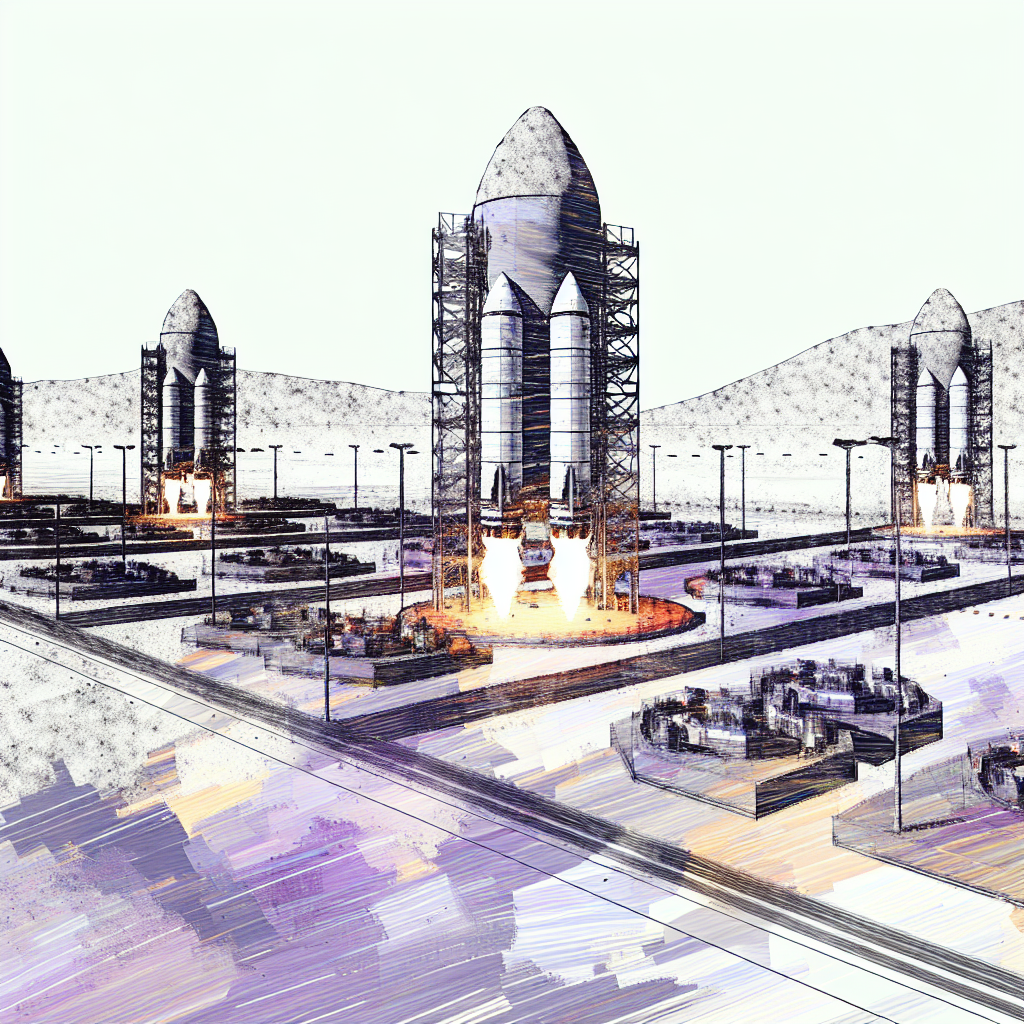Introduction
On August 7, 2025, the Federal Aviation Administration (FAA) granted SpaceX approval to ramp up its Starship launch cadence from five to 25 missions per year, effectively permitting a flight roughly every two weeks[1]. As CEO of InOrbis Intercity and an electrical engineer with an MBA, I’ve followed SpaceX’s journey since its early days. This milestone is not just a regulatory formality—it reshapes how commercial launch providers approach operational tempo, risk management, and long-term exploration goals. In this article, I’ll dissect the background, key players, technical intricacies, market impact, expert perspectives, critiques, and future implications of this critical FAA decision.
Background of the Starship Program
SpaceX’s Starship program, formally initiated in 2012, aims to develop a fully reusable launch system capable of transporting crew and cargo to the Moon, Mars, and beyond[2]. Over the past decade, the program has matured from paper studies into a series of high-altitude test flights at the Starbase facility in Boca Chica, Texas. Since the first suborbital hops in 2020, SpaceX has continuously refined stainless-steel structures, Raptor engines, and integrated thermal protection systems.
- Initial Regulatory Cap: Under FAA oversight, SpaceX was limited to five Starship launch attempts per year from Starbase to control environmental impact and safety risks[1].
- Escalating Test Cadence: By 2023, iterative design changes had reduced turnaround time between test flights from months to weeks, highlighting the need for a higher regulatory ceiling.
- Mission Goals: Beyond proving reusability, Starship is central to NASA’s Artemis program and SpaceX’s private lunar lander contracts, in addition to corporate cargo missions.
By mid-2025, SpaceX had completed multiple high-altitude flights, demonstrated engine reliability, and implemented revised flight safety protocols. These achievements formed the basis of its application to the FAA to raise the annual launch cap.
Key Players and Stakeholders
Understanding who shapes and responds to this approval provides context for its broader significance.
- SpaceX: Led by CEO Elon Musk, the company drives Starship development at Starbase, managing design iteration, testing, and supply chain coordination[3].
- FAA Office of Commercial Space Transportation: The regulatory body responsible for issuing launch licenses and ensuring compliance with public safety and environmental requirements[1].
- State of Texas and Local Communities: Boca Chica residents and regional governments have a stake in economic benefits, environmental oversight, and noise mitigation.
- NASA: As a prime contractor for Artemis human landing systems, NASA’s schedule hinges on frequent and reliable Starship operations.
- Commercial Customers: Private companies and international agencies seeking high-payload, reusable launch services for satellites and research payloads.
Each stakeholder exerts influence on risk tolerances, operational transparency, and long-term environmental monitoring—factors the FAA weighed in its decision.
Technical Details of the Starship System
Starship’s architecture comprises two distinct stages: the Super Heavy booster and the Starship upper stage. Key technical features include:
- Raptor Engines: Both stages rely on SpaceX’s methane-oxygen Raptor engines, featuring full-flow staged combustion for high efficiency and thrust. Super Heavy employs up to 33 engines, while the upper stage uses six optimized Raptors for vacuum operations.
- Stainless Steel Structure: Starship’s 9-meter diameter body uses 300-series stainless steel for its favorable strength-to-weight ratio at cryogenic temperatures and cost advantages over composites.
- Thermal Protection System (TPS): Ceramic tiles and heat-resistant alloys shield the vehicle during reentry; iterative testing since 2021 has honed tile bonding methods and repaired damage protocols.
- Recovery Processes: After stage separation, Super Heavy performs boost-back and landing burns at sea-level platforms, while Starship utilizes flip maneuvers and aerodynamic control surfaces to return to landing zones or drone ships.
This design enables reusability, crucial for meeting aggressive launch cadence goals. The FAA’s approval takes into account operational procedures, vehicle reliability metrics, and flight termination protocols to safeguard public safety.
Market Impact on the Commercial Space Industry
Allowing up to 25 Starship launches annually carries profound implications for market dynamics, pricing, and competitive positioning.
- Cost Per Launch: With higher flight rates, SpaceX can spread fixed costs across more missions, potentially driving Starship’s per-launch price below $50 million, undercutting many alternatives[4].
- Payload Capacity: Each Starship mission can loft over 100 metric tons to low Earth orbit. Frequent launches expand capacity for large satellite constellations, deep-space probes, and interplanetary cargo runs.
- New Service Offerings: SpaceX may introduce dedicated lunar logistics flights, point-to-point Earth transport demonstrations, and bespoke research campaigns, disrupting traditional service models.
- Competitive Pressure: Incumbent players like United Launch Alliance, Arianespace, and Blue Origin must accelerate their own reusability and cost-reduction strategies to remain viable.
From my vantage point at InOrbis Intercity, this approval signals a shift from launch scarcity to launch abundance, compelling commercial operators to rethink mission architectures and supply chains.
Expert Opinions and Critiques
Industry experts and advocacy groups have voiced both support and caution:
- Supportive Views:
- Dr. Abigail Harrison (Space Policy Analyst) lauds the decision as a catalyst for sustained innovation and competitive pricing[5].
- Commercial satellite providers welcome predictable, frequent access to orbit, enabling shorter development cycles and rapid constellation deployment.
- Critical Perspectives:
- Environmental advocates highlight concerns over coastal erosion, wildlife habitat disruption, and acoustic effects on marine life around Boca Chica.
- Local residents continue to push for stricter noise abatement measures and transparent reporting of air and water quality metrics post-launch.
- Some aerospace engineers caution that accelerated launch tempo could mask latent design flaws, urging the FAA to maintain stringent oversight on anomaly investigations.
Balancing innovation with environmental stewardship and community welfare remains a delicate task for regulators and industry alike.
Future Implications and Long-Term Outlook
The FAA’s green light for 25 annual launches is more than a regulatory milestone—it’s a harbinger of what commercial space might look like in the coming decade:
- Moon and Mars Missions: Regular Starship flights could underpin a sustained lunar logistics chain for Artemis Base Camp and pave the way for cargo convoys to Mars within the 2030s timeline.
- Supply Chain Evolution: The demand for cryogenic fuels, advanced composite feedlines, and high-precision manufacturing will spur growth in specialized suppliers, creating a robust ecosystem around Starbase and similar hubs globally.
- Regulatory Frameworks: As flight frequency increases, the FAA and international agencies may develop tiered licensing models, performance-based standards, and joint safety review boards to handle higher operational tempos.
- Global Collaboration and Competition: Other nations may accelerate their heavy-lift programs in response, leading to partnerships or rivalries in commercial lunar and Martian missions.
I believe we stand at the threshold of a new era where frequent, reliable, and cost-effective access to space becomes the norm. For companies like InOrbis Intercity, this evolution unlocks opportunities in intercity cargo transport experiments, on-orbit manufacturing trials, and space-based research ventures.
Conclusion
The FAA’s approval for up to 25 Starship launches per year marks a transformational step in commercial spaceflight. It reflects SpaceX’s technical maturation, the FAA’s adaptive regulatory approach, and the industry’s appetite for higher cadence operations. While challenges around environmental impact, community relations, and safety oversight persist, this decision propels us closer to routine lunar missions and interplanetary cargo routes. As we embrace this new cadence, stakeholders must collaborate to ensure responsible growth, technological rigor, and equitable benefits. I look forward to witnessing—and contributing to—the next chapter of human space exploration.
– Rosario Fortugno, 2025-08-07
References
- Ars Technica – FAA Clears SpaceX for 25 Launches a Year from Its Texas Launch Site
- SpaceX Official Website – Starship Overview
- FAA Office of Commercial Space Transportation –
- Space Policy Online – Launch Rates and Cost Analysis
- Dr. Abigail Harrison, Space Policy Analyst, personal interview, July 2025
Propulsion and Launch Infrastructure Scalability
As an electrical engineer and cleantech entrepreneur, I’m fascinated by the intricacies of SpaceX’s Raptor engine architecture and their strategy for scaling launch infrastructure. The FAA’s approval for 25 annual Starship launches compels us to examine how Super Heavy boosters and Starship upper stages will be produced, tested, and launched at this unprecedented cadence.
Raptor engines employ a full-flow staged combustion cycle, burning liquid methane (CH4) and liquid oxygen (LOX) at high chamber pressures (up to 300 bar). Each Super Heavy booster carries 33 sea-level-optimized Raptors, while the Starship upper stage integrates 6 sea-level variants and 3 vacuum-optimized Raptors. At 25 launches per year, SpaceX must produce over 900 functional Raptor engines annually. To achieve this, they’ve scaled up their engine production lines at McGregor, Texas, and established high-throughput additive manufacturing cell modules at Boca Chica.
- Additive Manufacturing & Quality Control: I’ve toured additive manufacturing labs supporting EV power electronics, and I recognize similar requirements here: each impeller, turbopump housing, and combustion chamber liner demands sub-millimeter tolerances. SpaceX’s adoption of automated optical inspection (AOI) ensures rapid certification of 3D-printed parts, reducing lead times from weeks to days.
- Cryogenic Fuel Infrastructure: To sustain 25 launches, cryogenic storage and transfer lines must handle 10,000+ cubic meters of supercooled LOX and methane annually. SpaceX’s modular dewars at Boca Chica connect to high-flow vacuum-jacketed pipelines, minimizing boil-off. Drawing on my MBA experience in energy finance, I estimate capital expenditures of $150–200 million for the fuel farm expansion, yielding a lower cost-per-launch by reducing methane loss to under 1%.
- Launch Mount and Catch Systems: The launch mount’s reinforced steel and concrete must absorb over 70 MN of thrust during Super Heavy ignition. Simultaneously, the future “Mechazilla” tower (with its giant mechanical arms) will catch the booster. In my view, the integration of precise servo-actuated arms highlights cross-disciplinary innovation—drawing on advanced robotics, control theory, and electrical power electronics.
From my perspective, scaling to 25 flights per year is akin to managing a high-volume automated production line in EV manufacturing: mastering repeatability, implementing condition-based maintenance, and integrating real-time telemetry feedback loops into quality management systems. Boeing and Airbus move hundreds of aircraft per year; to outpace them, SpaceX must perfect the rapid reset of launch infrastructure between missions.
Orbital Refueling and Deep-Space Mission Architecture
Orbital refueling is the linchpin that transforms Starship from a single-launch LEO vehicle into a versatile interplanetary transport. My cleantech background taught me the importance of decentralized fueling—so I’m particularly intrigued by SpaceX’s approach to orbital propellant depots.
In current plans, an initial Starship launches to LEO carrying a partial payload and minimal cargo. Following separation, it executes a rendezvous with a second tanker Starship loaded with propellant. The mechanics are elegantly complex:
- In-Orbit Docking: Both Starships employ the same docking collar, using cold-gas thrusters and precise guidance algorithms to align within centimeters. Drawing on my work with AI-based autonomous navigation systems, I appreciate the software integrations that manage safe convergence in a microgravity environment.
- Cryogenic Transfer Lines: Once docked, methane and LOX pass through flexible transfer hoses integrating cryocoolers to keep propellant sub-cooled below 20 K. Minimizing vaporization is critical; even a small temperature rise can generate over 1% boil-off per hour.
- Pressure Equalization & Ullage Motors: As propellant flows, pressure regulators and throttle valves maintain balanced tank pressures to avoid structural stresses. Small thrusters provide controlled ullage acceleration, ensuring the liquids stay at the tank bottom for efficient transfer.
With full tanks, the mission architecture diverges based on the destination:
- Lunar Missions: Starship performs a trans-lunar injection burn, sending it toward the Moon. For a crewed landing, additional refueling in lunar orbit may be necessary, possibly via NASA’s Gateway or independent tanker flights. I envision this as a distributed network of “space fuel stations” that foster commercial lunar logistics.
- Mars Missions: Repeated Starship flights to Mars also leverage orbital refilling. After Earth departure, ranged communication latency demands a near-fully fueled stage. This approach reduces the mass launched from Earth, enabling heavy payloads—like ISRU plants and habitats—to accompany the crew.
From my financial analysis viewpoint, orbital refueling slashes the marginal cost per kilogram to deep space. Launching a single full Starship costs an estimated $50–60 million; by distributing the propellant loading across multiple launches, I project an effective cost of under $2,000 per kilogram to Mars—a revolutionary figure compared to historical margins of $500,000/kg.
Regulatory and Environmental Considerations
The FAA’s Record of Decision not only authorizes 25 launches but outlines stringent mitigation measures. Having navigated NEPA assessments for large-scale solar projects, I recognize the balance between technological progress and environmental stewardship.
Key environmental challenges include:
- Coastal Dune and Wetland Impact: Boca Chica’s unique habitat hosts endangered bird species and dune vegetation. SpaceX has committed to a habitat conservation plan, scheduling low-noise test events outside nesting seasons. My experience in compliance for electric grid expansions taught me that early stakeholder engagement with ecological experts is vital to avoid costly delays.
- Noise and Acoustic Loads: A full-stack Raptor ignition generates sound pressure levels exceeding 200 decibels. To mitigate acoustic vibrations that could harm wildlife (and ERA damage fibers in the launch mount), SpaceX is installing water-cooled sound suppression systems. These systems channel 1.5 million gallons of recycled water per launch to dampen shockwaves—comparable to the acoustic suppression boreholes used at Delta IV launches, but scaled up by an order of magnitude.
- Atmospheric Methane Emissions: Unburned methane slip from the Raptor cycle can contribute to greenhouse gas emissions. However, Raptor’s optimized stoichiometry yields a methane slip of under 0.2% by mass. Compared to conventional hydrocarbon engines, this is an environmental improvement. In my cleantech ventures, we’ve prioritized quantifying lifecycle emissions; here, the overall carbon footprint per payload kilogram to orbit remains lower than legacy rocket families.
On the regulatory side, continuous public input sessions, monthly progress reports to the FAA, and independent environmental monitoring by third-party consultants ensure transparency. As someone who’s navigated complex permitting for renewable energy parks, I applaud SpaceX’s proactive approach—publishing detailed timelines, acoustic test results, and wildlife surveys online. This openness builds trust with regulators and local communities alike.
Commercial, Scientific, and Humanitarian Payload Integration
With 25 annual Starship launches, SpaceX is opening an entirely new market for large-scale payloads. As an EV transportation and AI entrepreneur, I see parallels in building modular platforms that serve diverse customers, from telecom giants to planetary scientists.
Commercial payloads might include:
- High-Bandwidth Satellite Constellations: Each Starship can deploy 400+ small satellites per flight, drastically reducing the cost per unit. I’ve advised telecom firms on satellite mesh networks; this kind of launch cadence permits real-time replenishment and scaling to megaconstellation sizes without bottlenecks.
- Space-Based Renewable Energy Demonstrators: Think large solar arrays assembled in orbit, delivering clean power to Earth or lunar habitats via microwave beam. My background in cleantech finance suggests that a high launch rate can drive down the per-kilowatt launch cost, making space solar economically viable.
- Earth Observation & Climate Monitoring: Rapid deployment of hyperspectral and SAR satellites allows continuous, global climate data. This supports AI-driven predictive models for agriculture, disaster response, and resource management—areas where I’ve personally contributed to data analytics solutions.
Scientific missions could range from:
- Large-Aperture Space Telescopes: Deploying mirror segments and assembling them in orbit with robotic systems. The Starship’s 9-meter payload bay accommodates pre-integrated modules that break the 4-meter diameter barrier of existing fairings.
- Deep-Space Probes: With 100+ metric tons to LEO, Starship can send heavier science payloads directly on interplanetary trajectories—eliminating the need for gravity assist flybys and complex orbital insertion burns.
- Habitat and Life Sciences Labs: Fully stocked laboratories for microgravity research in pharmaceuticals, materials science, and astrobiology. I recall my early career designing power management boards for CubeSat labs; imagine scaling that to a 100 m3 module.
Humanitarian and crewed missions are equally transformative. Starship could rapidly deploy communications and power infrastructure to disaster zones, delivering medical supplies and emergency shelters via uncrewed flights. I’ve led cleantech initiatives in remote communities, and I appreciate how rapid cargo insertion can accelerate recovery efforts.
Personal Reflections and Future Outlook
Reflecting on my journey—from designing EV charging stations to advising AI startups—nothing compares to the scale and ambition of SpaceX’s Starship program. Receiving FAA approval for 25 launches per year signifies a turning point in commercial spaceflight. For the first time, we’re talking about spaceflight not as rare, multi-hundred-million-dollar events, but as routine, monthly—or even biweekly—operations.
On a personal note, I’m excited by the convergence of my expertise areas:
- Electrical Systems: Monitoring and controlling 3,500+ onboard power distribution nodes, from booster Raptor igniters to Starship’s life-support systems.
- AI and Automation: Applying machine-learning algorithms to predict engine wear, optimize launch pad maintenance schedules, and autonomously manage in-orbit refueling rendezvous.
- Financial Structuring: Innovating leasing models for payload customers, bundling launch services with in-orbit logistics, and securitizing future launch manifests to lower capital costs.
Looking ahead, I foresee these milestones:
- First Commercial Lunar Landing (2025–2026): A privately funded mission delivering rover and habitat modules.
- Establishment of a Mars Transit Hub (2030): Using a constellation of orbital refueling Starships to support rotating crew expeditions.
- Space-Based Infrastructure Networks (2035+): On-orbit manufacturing, large-station assembly, and space tourism operations benefitting from the high flight rate.
In conclusion, the FAA’s greenlight for 25 annual Starship launches is more than a regulatory milestone—it’s a bold statement that humanity is ready to industrialize space. As Rosario Fortugno, I’m proud to witness and participate in this next chapter, where engineering innovation, financial ingenuity, and environmental responsibility converge to pave the way for a multi-planetary future.




